This is a short post that about the relative merits of Anvil vs Bypass Secateurs and Loppers – and why you should care. It turns out that Anvil and Bypass cutters are designed to fulfill specific, different gardening requirements.
If you are in the market for either new secateurs (hand pruners to our American friends) or loppers (also know as tree loppers or lopping shears), you will be faced with a choice of either anvil or bypass. In our opinion, few manufacturers do much to tell you the intended uses of each type of cutter. It does matter. If you don’t match up the type of cutter to the type of cutting and pruning you are going to be doing it can end up costing you more money.
At the Garden Shredder Review, our focus is on how you choose and get the best out of your garden shredder. We have created a series of posts on the accessories you are going to need to prepare your cuttings for your shredder. Principal amongst these are:
- Secateurs (Hand Pruners) – good for shoots and branches up to around 1cm in diameter
- Loppers (Lopping Shears) – good for branches up to around 2cm in diameter
- Telescopic tree pruners –good for branches up to about 3.5cm
- Pruning saws – can be used from any woody stem from 1cm on up about 10cm
Each of the above tools (with the exception of the pruning saw) can come with anvil or bypass options.
What is an Anvil Cutter?
You are probably well aware of how an anvil cutter works. Just to make sure there is no confusion – anvil cutters have a single moving blade which cuts by closing onto a flat surface called the anvil. Anything between the anvil in the blade is cut as the blade moves to the anvil.
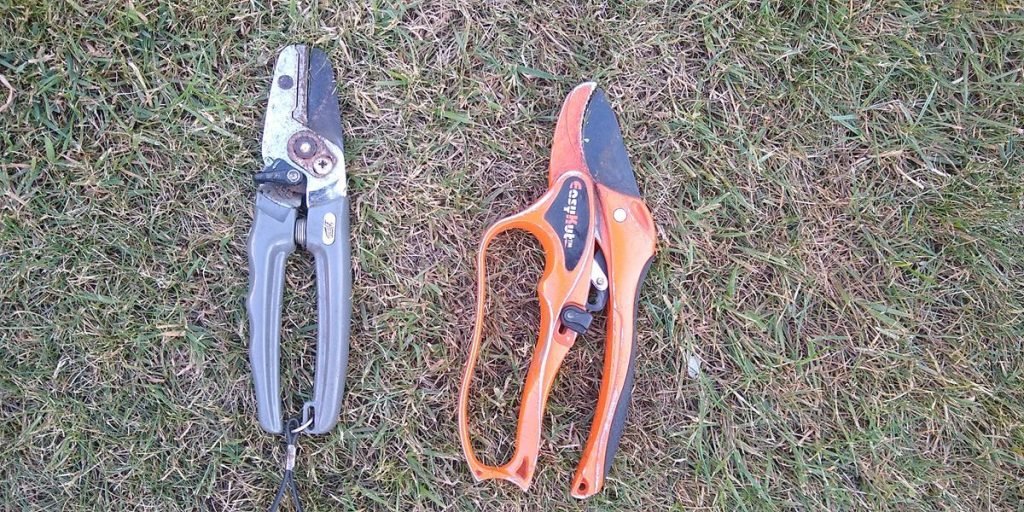
The face of the anvil is made of a softer metal or material than the blade so there is no damage to the blade as it closes. The anvil can be made to be quite substantial and robust. This makes anvil cutters particularly effective in cutting dry, tough or dead wood.
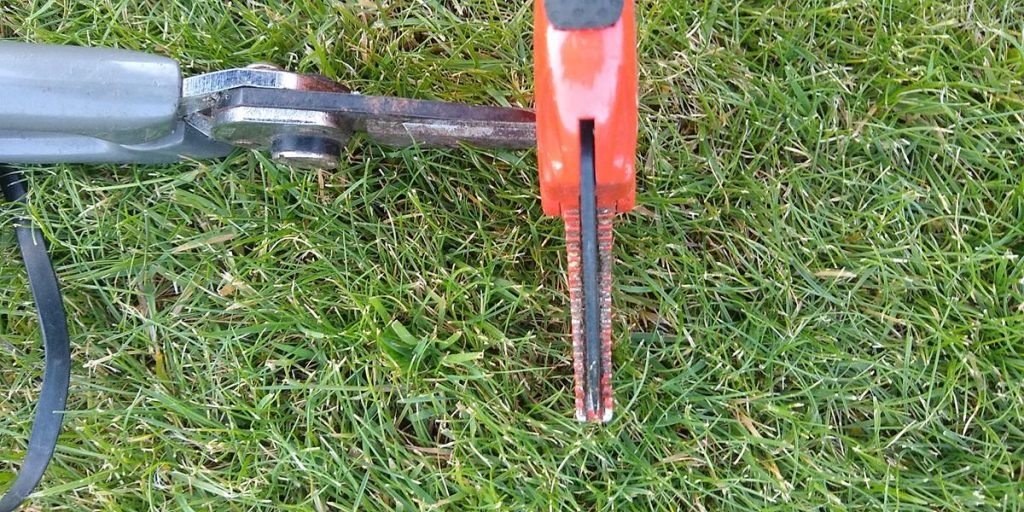
For tougher branches, the anvil cutting mechanism inevitably includes a degree of crushing action too. For this reason, anvil cutters are not recommended for cutting softer, green shoots.
What is a ByPass Cutter?
Bypass cutters work exactly like scissors. There are 2 blades that work in opposition. Cutting takes place as the 2 blades move over each other.
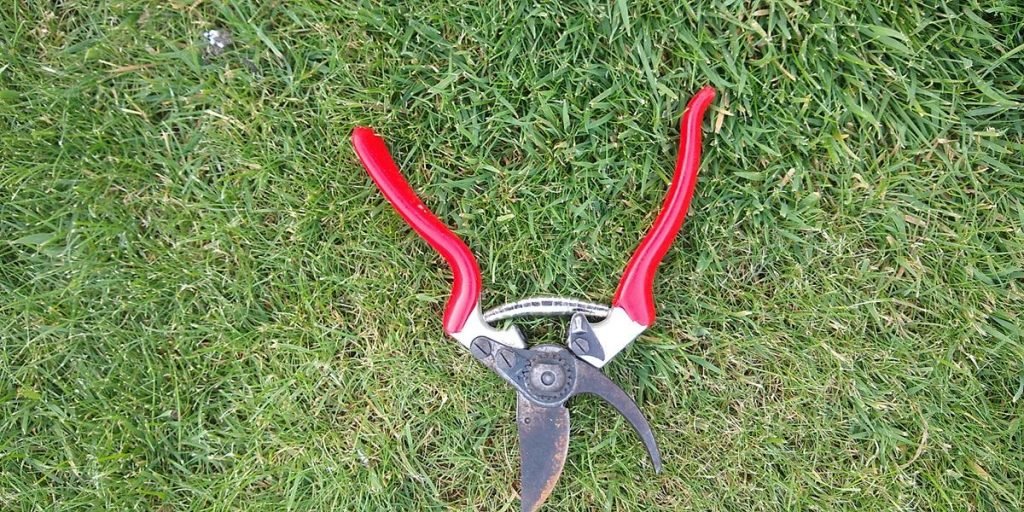
As cutting takes place from both sides there is less crushing of the stem or shoots. Bypass cutters are therefore seen as more plant friendly leaving a cleaner cut and less bruising.
Anvil Vs ByPass Secateurs and Loppers – Why you Should Care
There are many gardeners that now say they would only ever use bypass Secateurs or Loppers. That view could be expensive.
At some point, you are going to have a tough or dead branch fight back. You will be applying a bit too much force and the branch will move or twist in the cutter. For anvil cutters that’s usually not a big deal. The anvil face will keep the branch in place and a little bit of twisting won’t affect the blade.
For Bypass cutting mechanisms the results can be a little more important. A branch that twists can (and will) get between the blades forcing them out of alignment. Once this happens, the blades can’t work in opposition to cut and may bet permanently bent out of shape. Once the scissor action is disturbed bypass cutters lose their efficiency and may not work at all.
I have an engineering background and have managed to straighten distorted blades. It isn’t easy and the cutter is never as good as before.
Getting the right secateurs or loppers depends on the use you are going to put them too. This is exactly the same philosophy we recommend when choosing your garden shredder.
Over the years we have come to take a blended approach. Almost all the secateurs we buy are bypass models. We aren’t likely to cut anything tough enough to cause the blades to twist. Even if we try to, we are not going to be strong enough to damage the blades.
Our loppers are anvil models. Most of our lopping is done in mid winter. Our aim is to feed the garden shredder. In the depths of winter, branches are dry and very tough. The greater rigidity of the anvil prevents us damaging the cutter.
Conclusion – why you should care
So the reason you should care about using and anvil or bypass secateurs or lopper is simple. If you use the wrong type for the wrong purpose it can cost you money.
Anvil cutters are better for larger, tougher, dry or dead branches. Bypass cutters cut more cleanly and are better for the plant when cutting softer, green stems and shoots.
Ideally you would have both types of cutter in your tool shed. In practice this is likely to be overkill. If we could only have one type of cutter, we would go for bypass models. Just be careful not to apply too much force when cutting that last, hard to reach branch.
Essential Tools for You to Feed Your Garden Shredder
We reckon there are at least 4 essential tools to help you feed your garden shredder.
Secateurs (Hand pruners)
As mentioned, secateurs can be anvil or bypass. It in doubt, go for bypass.
Secateurs are the tools you are going to use everyday to cut shoots and clippings. Secateurs are good for cutting shoots and branches up to about 1cm diameter.
Anything cut using secateurs is likely to be small and soft enough to shred with a simple impact shredder
Lopping Shears (Loppers)
Loppers are great for cutting larger branches than it’s possible or sensible to cut with secateurs.

Almost all the loppers you buy have telescopic handles. These are really designed to help you reach those branches a little further away. Once those handles are extended you have a lot more mechanical advantage available and you can try to cut bigger branches.
A word of caution – the extending handles are not necessarily going to be able to cope with your maximum force. Use with care or you are going to break the loppers.

Loppers are good for cutting branches of up to about 3cm. As loppers are best suited to cutting wood, the materials produced are likely to be best shredded using a quiet (cog) shredder or Bosch’s outstanding Turbine Cut shredder
Telescopic Tree Pruners
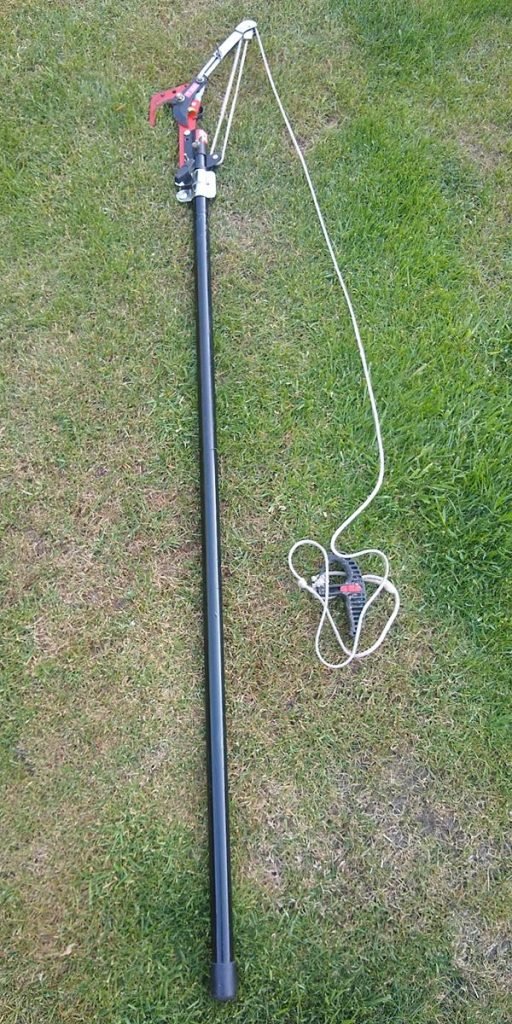
Telescopic Tree Pruners are enormously useful in reaching and pruning higher branches. They can be a little unwieldy to use – particularly if you are high up on your steps or ladder trying to reach the middle of the tree.
Tree pruners tend to have bypass cutters. You use the pruner by snagging the branch to be cut in the hook blade. You operate the cutting blade by pulling on the string.
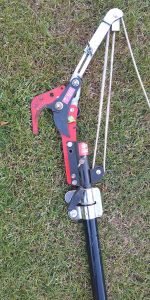
The pulleys on the blade mechanism provides a lot of mechanical advantage so you can fairly easily cut branches of 3cm or more. As with the loppers, you are going to be better served by feeding your cuttings into a quiet (cog) shredder or Bosch’s outstanding Turbine Cut shredder
Many tree pruners also have an optional pruning saw. It is easier to use a saw on a telescopic pruner than you might think.
Pruning Saws
With a little care, it is remarkable how big a branch you can cut with a humble pruning saw.
A pruning saw is versatile. You can use it to cut a branch that is in a place that is just too difficult to get the loppers on. You can also use them to cut pretty large branches.
In general, we don’t recommend cutting branches bigger than about 4cm. If you do, make sure to use the 3 cut rule (cut the outer half of the branch first, then cut about half way down the remaining branch. Finally cut off the rest). If you are cutting branches bigger than 4 cm you should probably seek out some professional help.

